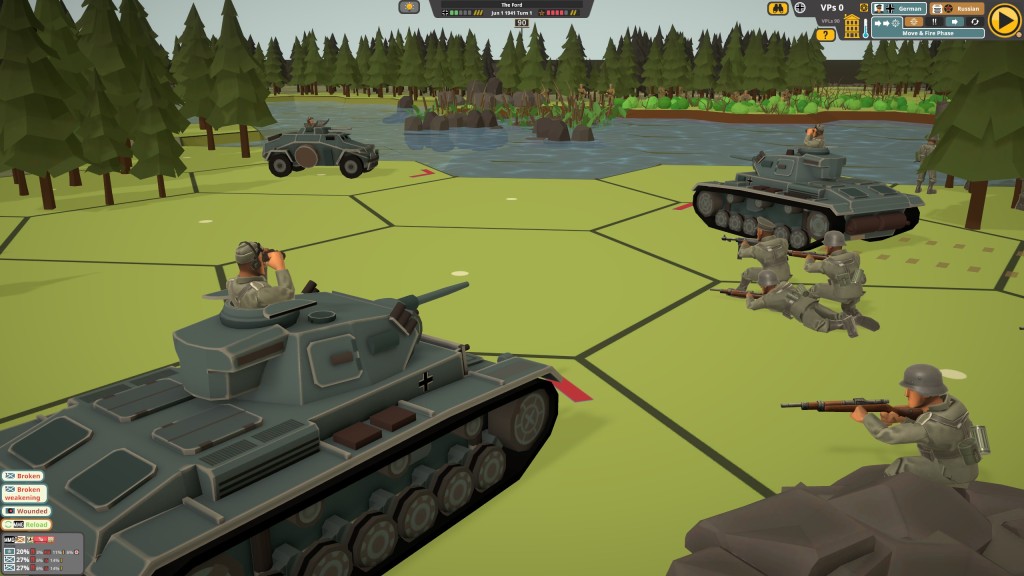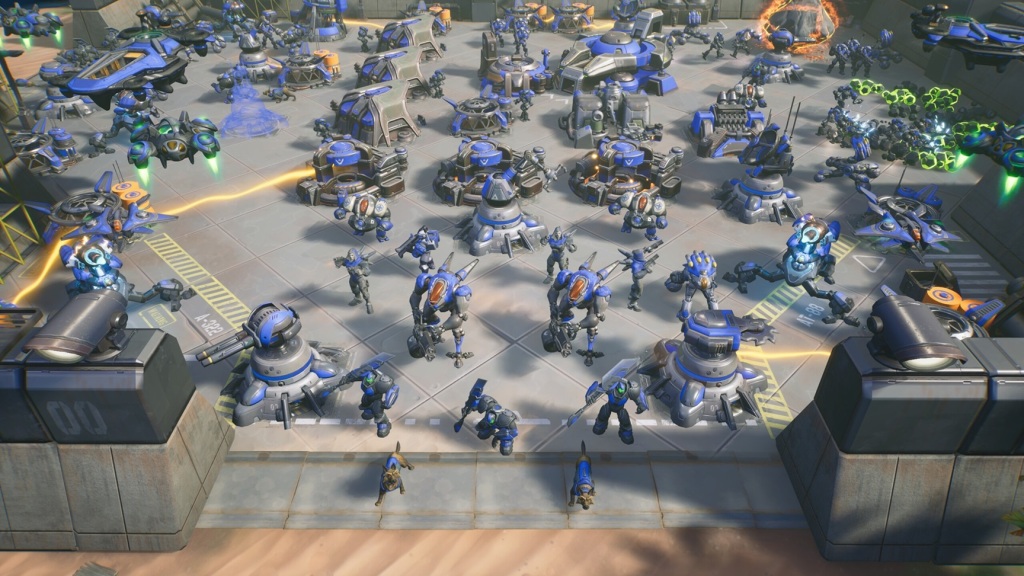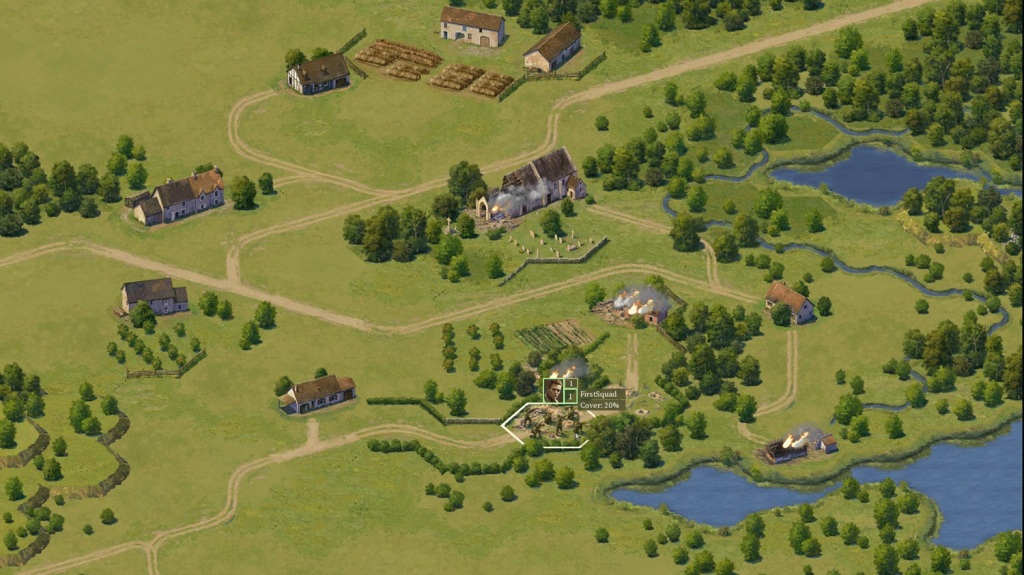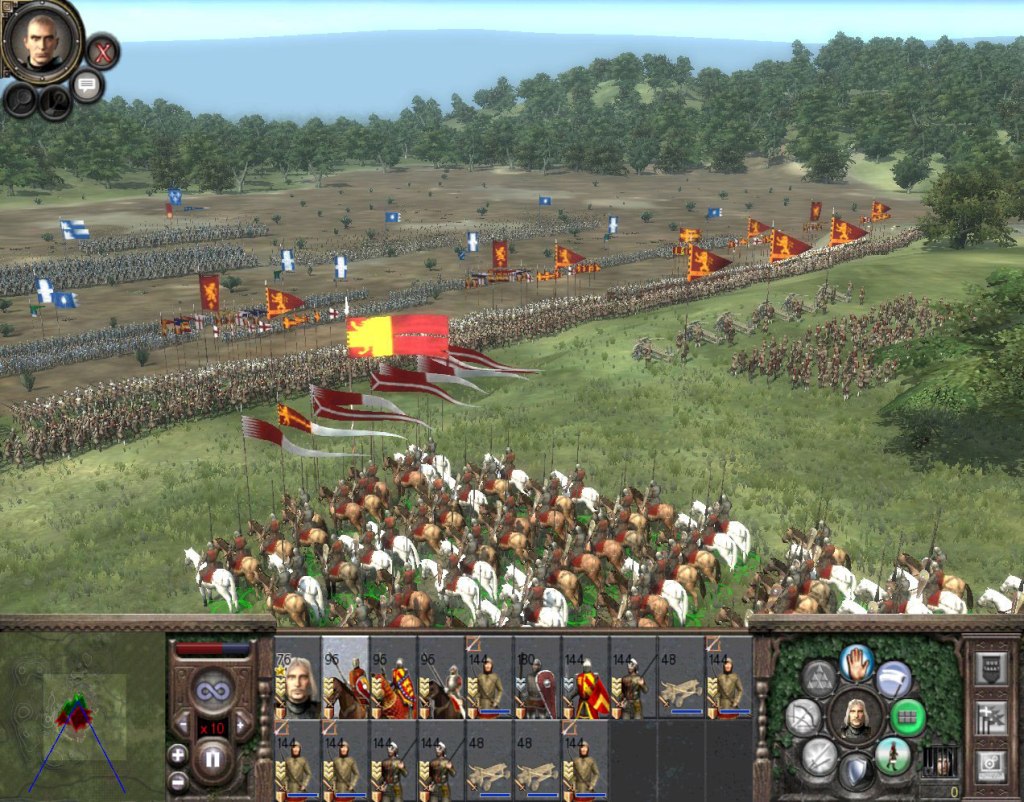First things first: consider this brief introduction to Second Front a sort of sneak peek into what this tactical World War 2 promise-filled caked can become when it releases. However, this is not my first ride – and most certainly won’t be the last- with this one. In fact, when Joachim Bader, the designer, and programmer for Second Front allowed Strategy and Wargaming to get an early sneak peek at what his love child had to offer. After letting me test Second Front for a dozen hours, we came out with this amazing interview you should totally take the time of your day to read and understand how Second Front came about.
Done reading the interview? Then enough rambling let’s get straight into it! From the get-go, Second Front is going to be a polarizing one. It’s one of those games you’ll either love dearly all the while wishing upon many a star for a sequel, questioning your God as to why- oh why? – there aren’t any more games like it? Or it’s going to be one of those titles that don’t interest you in the slightest. You’ll see why in a couple of paragraphs. However, here’s my personal take before we get into it: If my pestering of Joachim Bader after our interview to allow me to play more is anything to go by, you can easily guess in which category I fall. I’ve played Second Front more than a year ago, so this isn’t my first ride with it, and let’s get this out of the way really fast: Despite being a personal contender for a future game of the year nominee when it releases later down the line, Second Front is not without its flaws, some of which should be addressed prior to wider market reception.
But what is Second Front? It’s a deceivingly traditional wargame, very well disguised as something new. It is a World War II turn and hex-based, 3D tactical game at the squad level, meaning that every unit you control is either a squad, a vehicle, gun, tank, and officers. So far, so vanilla, right? But take a time to consider how many World War II games at the tactical level have come out in the last couple of years worth mentioning? Barely anything. We have Steel Division 2, which I would be hard pressed to consider a true wargame; Valor & Victory, which is just average, to not say anything mean about it; Close Combat: The Bloody First was a bloody disaster. The Troop was okay-ish, but nothing special. The only good one was Decisive Campaigns: Ardennes and even that one was hanging perilously on the rope between tactical and operational levels, and most certainly it wasn’t played at the squad level. Leave by wayside Wargame Design Studios’ upcoming efforts to revamp John Tiller’s Squad Battles and elevate your searching to fully operational and it’s hard to mention bad games. Warplan and its sequel Warplan Pacific are still traditional, but very well executed wargames; The Operational Art of War IV is now a ubiquitous hallmark; and even interesting forays into the unknown like Attack at Dawn: North Africa being a real-time hex-game came out rather well! The same praise can be leveled at Radio General. Second Front is coming out during a very favorable setting, finding an almost virgin ground where it can – and hopefully will- succeed.
Usually, all my analysis starts with the base mechanics but let’s switch things up a bit and focus first on the most striking aspect of the game: its visuals and production levels. The cartoony, Bolt Action look, according to what Joaquim confided to me, and almost every design decision was made in order to turn Second Front into an “easy to understand what the hell is going on” game, but never compromising on the complexity of mid-20th century combat. If these graphics look too childish, don’t let them fool you. Behind this simple-looking game is a monster of a tactical wargame that goes all the way to simulate every moving part of the battlefield. Complexity is something Second Front isn’t afraid to embrace, in fact, I would argue it’s one of the most complex wargames at the tactical scale level, surpassed solely by the likes of Combat Mission and the Graviteam Tactics series.
The playtest has half a dozen missions, spread out between commanding the Germans and the Americans (the Soviets will show up on the final product, but not here). The combatants have a go at each other in turns, but not quite as you would expect it. You see, every turn is comprised of four distinct moments: an explicit “movement and fire”; a reaction fire phase; a final movement phase; and a recovery phase when routed units have a chance to regain their composure. There’s a lot going on, and the computing AI doesn’t stress much about taking its sweet time to think its moves through and through. All and all, turns can take as long as several minutes to process, and in battles with a large number of units this can end up being extremely taxing and time-consuming.
Speaking of which, Second Front’s AI can be an absolute monster to deal with. One of the game’s tooltips lets everybody know its silicon officers can defend and attack at the same time without breaking a sweat – and sweet Lord Almighty, they sure can! The third german scenario puts you in charge of two forces: a rag-tag bunch of defenders trying to hold a town against an overwhelming American force and another, heavily armored second force trying to break a small American contingent preventing them from advancing and getting into the main battle, supporting the defending germans. It’s surprising how half a dozen units of Yankees manage to bog down a superior german armored fist of 2 tank destroyers, one tank, and more than enough germans to empty out a bohemian beer factory. These robotic foes will try to puncture your lines, exploit those weaknesses, flood the objectives and avoid getting mowed down by well-placed machine gun emplacements and anti-tank guns, by carefully considering the avenue of attack and if they are, or aren’t, exposing themselves to your traps and lines of fire. This artificial astuteness is so impressive they’ll even send small flanking forces to take down your guns before advancing. I would bet my dollars that Joaquim didn’t create this AI, but instead, summoned a bunch of dead World War II officers and entrapped their souls within the game files. Usually, I’m too bad at games to even attempt to critique the artificial intelligence of most games, but Second Front’s is so natural and impressive one can’t help but notice. Even more direct competitors like Combat Mission have their pixellated soldiers do some dumb stuff all the time, but Second Front’s is something else entirely.
The battles are, for the most part, just your average tactical turn-based World War II affair, but are the small things that set Second Front apart, and there are a lot of those: buildings are built of several hexes, so there’s a possibility you’ll be fighting the enemy on the same building, just one hex apart. Add to this that every hex has a certain number of height levels (assuming there’s a stair connecting them and there’s also the chance of combat happening on that same hex but with units firing on each other on different levels. This would make for quite an interesting Stalingrad scenario. The controls of the tanks are exquisite for a game like this. Every lumbering machine of war can reach its destination and deploy in six different directions, instead of the usual 4 (check the picture below), commanders can open and close the hatch for a better view of the battlefield, tanks can deploy smoke, choose between AP and HE rounds, what machine guns to fire (when a tank has several), and where you want its turret pointing.
Second Front is a game about the simulation of all these small moving parts, instead of simply abstracting them. There’s a lot of micromanagement here, and infantry units are especially needy; leave them alone in the open and as soon as a bullet comes flying their way, they’ll run away to safety and become uncontrollable for a number of turns or until an officer rallies them back to the fight. Open terrain crossing is a risky maneuver and to be overtly avoided when possible. Units are quite durable, all things considered, but if they don’t die, they’ll scatter on the battlefield, and losing control of them is pretty much the same as having them dead for a while. Each squad can also have a “special” weapon, and not in the MOBA kind of way. This will almost always be a bazooka or a machine gun but can also be flamethrowers or explosives. Instead of just “firing at will” with everything, you can decide which weapon on that squad you want to use.
Want to force the enemy’s head down on the ground? Use the machinegun to surpress. Maybe you’re lucky today and want to see if you can down a couple of your rifles? Shoot those instead. Or shoot all. These weapons can be dropped and picked up at will. Units also have a couple of options when it comes to their movement speed and how the chosen option affects their performance in combat. Tanks can move and move and stop, increasing their accuracy. Infantry can run, walk, and prone. A lot of other small things include the probability for guns to malfunction, simulated fire, penetration values for each armored shot, tank armor, line of sight, vehicle wrecks, etc. All this good stuff is here for good measure. Here, have a look at the options you have.
One thing I found lacking among so many details is that I couldn’t, for the life of me, figure out if there is a way to have my units take cover behind friendly vehicles. One of the missions tasked Oberstleutnant me with crossing over a ford and capturing a soviet held position. With the only bridge destroyed, your soldiers are forced to get their boots wet on the open grounds. I was given a couple armored vehicles to help me along. Without a second’s notice, the trudging tracks rushed the waterway with the infantry following closely behind, but try as I might reposition them, the opposing side kept on shooting and routing them. Maybe they need to be on the same hex (several units can occupy the same hex)? Maybe the tank cover was already accounted for when the enemy shot at me. I’ll do further investigation.
Overall, the firefights produce realistic and expected results, with prior planning in obtaining a superior fighting positioning paying dividends when things go south. Keeping your meat bags safely concealed within forests and buildings is a must and a well-positioned unit can grind a vast formation to a halt. This alone will be enough to sell Second Front to most World War II inclined players. I love what Second Front is doing and I’m glad it’s delivering on its promise.
Before we move on to the less pleasing things, another couple of notes: there’s a garage that acts more as an interactive encyclopedia of outcomes. Want to know how your Sherman fares against a Panther? Better than you might expect. A T-34 against a truck? Why not? Sure, the garage is barely going to be used and it’s a novelty just for the sake of being but I love small touches like this.
To round these finals notes off: Second Front comes packed with a powerful scenario editor. Following Joachim’s design philosophy, it’s extremely simple to use (just plonk down at your heart’s content on the map editor, edit your scenario to place the units and objectives, and have a go) and it has infinite potential, limited only by the talent and imagination of the one using the tool. There’s already an option for the Steam Workshop, it won’t surprise me to see an emerging mod scene after the game’s release to the wider public.
Now, some of the downsides: for all of Joaquim’s efforts to make Second Front an information-rich and approachable game, its UI is atrocious beyond redemption, currently. With more insufferable icons than a corporate PowerPoint presentation to represent every single factor impacting the hit chance of an action crammed into a small window is a sure way to strain some eyes and scramble grey matter. Of course, your mileage on this might vary wildly depending on your preference. On one hand, I love having information readily available, just because it’s that much easier to make decisions instantaneous. On the other hand, I personally wouldn’t mind the game showing me the hit percentage, and if I want to know what factors are at play, a simple window pops up after a couple of seconds, to display the rest of the details. This won’t affect the flow of the game in any way, shape, or form. Just look at the way Crusader Kings III does this with its tooltips. I’m all for empowering players with information but having to constantly check the in-game manual to figure out what 5 icons means gets boring very quick, just give me words instead.
Other than the UI and long turns, it’s hard to fault Second Front anywhere else. Sure, the UI is convoluted, but it also manages to cram a lot of information into very limited screen space. The long turns are a consequence of the four phases, and options that will also impress some and disinterest others in the same measure. If the cartoony look is too much for you, try to look past it and enjoy the complex wargame lying underneath. There were some awkward moments during play: on the Ford mission mentioned previously, a Russian officer named Captain Petrenko managed to stay alive for 3 turns, destroying 1 vehicle in melee, all the while never leaving the open road(!), even after being shot by everything I had, tanks included. That’s a bit ridiculous, especially when all the rest of the game is so conservative with its results. Have some infantry in the open and they’ll panic the moment anyone sneezes towards their direction, but that Soviet captain was bordering on becoming the Chad memes the kids post these days.
Have in mind these are just my first impressions and things are always subject to changes later on, but having talked to Joachim before, I’m sure Second Front is coming slow and steady and its development is in good hands.
All said and done, Second Front feels like a natural evolution of the genre, something all other games of the genre should strive to be if it wants to keep modernizing and capturing new audiences. A rare breed of a game that no doubt will spawn many imitators and hopefully, an excessive amount of DLC.
Follow Strategy and Wargaming Socials
Strategy and Wargaming needs you to follow its socials. Are we the best strategy gaming website around? I would say so. Heck, what other options do you have? The Wargamer? Please.
So why not give us a follow on the cesspool that is Twitter, or join the 1000 other geriatric patients on Facebook? Or subscribe down below? Or maybe do everything? I don’t care, I’m not your grandmother.
If you enjoyed the article, consider buying me a coffee!
I’ve been running Strategy and Wargaming at my own expense since 2017, with only the ad revenue to cover the hosting, with everything else being done by me. So, if you’re an avid reader, you can afford it, and want to support the website, please consider Buying Me a Coffee by clicking this link, for as low as one euro! If you do, just know that you’re helping out a lot and contributing so that Strategy and Wargaming can continue growing!














Leave a comment